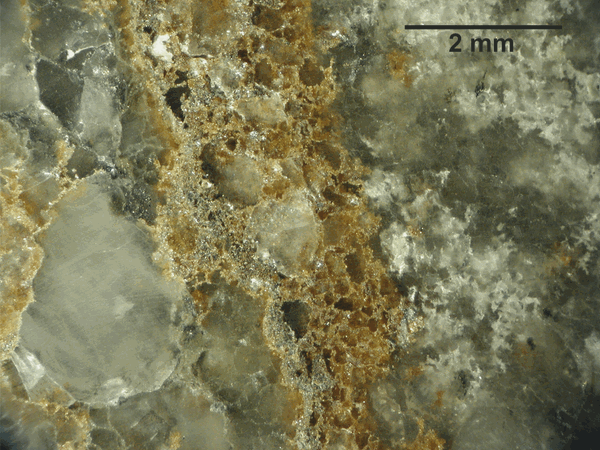Isotope dating of ore-related episodes leading to the formation of major Pb-Zn deposits in the Swedish part of the Caledonides

The Nadok ore body at Laisvall is particularly rich in sphalerite (ZnS). Rounded quartz grains of different sizes are cemented by sphalerite (yellowish). Scale bar is 2mm
Summary
A number of sandstone-hosted Pb-Zn impregnation ores occur along the Caledonian margin, and among these the largest and most well-studied is the Laisvall deposit, located about 35 km NW of Arjeplog. A common origin of these ores is anticipated, however, the genetic aspects are still not fully understood. The timing of ore mineral deposition is crucial in any ore modelling, and the current project aims to further constrain the age of ore-forming processes by dating sphalerite (using the Rb-Sr method) which is one of the major ore components.
Currently, there are two main scenarios with bearing on the timing; an “early” stage related to a far-field tectonic event, and a “late” stage related to the peak of the Caledonian metamorphism. However, available radiometric data do not allow any rigorous interpretation to be made about the age of the ore-forming stage(s).The present project will shed further light on the timing by providing additional analytical data to the existing data-set put together by various workers.


